Wolves. We must have once admired the animals, but then we began to persecute them in large parts of their habitat. In Germany, we persecuted and even exterminated them, too.
For more than 20 years now, wolves have been back in Germany. Currently, there are around 128 packs living mainly in the north-east of Germany. Not everyone is happy about this. Parents fear for their children, farmers for their livestock, hunters for their wildlife.
Again, and again, the media report on the dangers that wolves pose for us humans. I was very concerned about this. I had never encountered a wolf in the wild until then, but that was about to change. I decided to travel to British Columbia on the west coast of Canada in 2018 to look for the little-known, yet legendary coastal wolves. I wanted to find out for myself whether the animals are dangerous for us humans.

IMAGE ABOVE: A coastal wolf sleeps on the beach among the many driftwood. Its colour makes it almost completely disappear among the wood. | © Niklas Weber
The Great Bear Rainforest
I decided to travel to a very special area called the Great Bear Rainforest. It is part of the largest contiguous temperate coastal rainforest on Earth and is home to trees that are over a thousand years old. The Great Bear Rainforest is over 400 Kilometres long and is still protected by the First Nations people who have been preserving it for over 14,000 years. The area consists of thousands of small islands, hundreds of fjords and countless rivers. There are no roads here, at least not on land. To get around here you need a boat. So, I bought a small inflatable boat with an outboard motor. This gave me exclusive access to this huge area.
For weeks, I searched for the coastal wolves, with no sign that they really existed. During this time, I encountered some of the largest and most majestic animals this planet has to offer: killer whales, humpback whales, black bears, Steller sea lions, bald eagles, North American river otters, and many more. For a nature filmmaker and photographer, it was true paradise. I was able to experience incredible moments with these wild animals and managed to document their ecosystem extensively.


IMAGE LEFT: A large Steller sea lion smashing a salmon through the air to knock it out. | © Niklas Weber
IMAGE RIGHT: Two young black bears cross a river with the help of one of the many fallen trees. One carried a piece of salmon that his mother had caught earlier. | © Niklas Weber
Threats to the Ecosystem
Besides the incredible wildlife, the welcoming First Nations taught me a lot about their land during the time I spent with them. Unfortunately, I also discovered that this paradise is in great danger. Deforestation of the temperate rainforests, the construction of fish farms and pipelines, commercial fishing of herring in spring, and trophy hunting all pose serious threats to this paradise. I had to watch the massive deforestation of the temperate rainforests with dismay.
In the Great Bear Rainforest, the First Nations manage to keep the government at bay to some extent. However, Vancouver Island is almost defenseless against the government. There, even so-called “old-growth” forests are being cut down, i.e. forests that have never been cut down before. These are home to cedars that are over 1,000 years old.
This massive intervention in the ecosystem and the habitat of many animals on land and at sea causes irreversible damage. Often, logging takes place too close to the river banks, resulting in sediment being washed into the rivers. As a result, this causes problems for the salmon during their migration in autumn.


IMAGE ABOVE: What planet would you like to live on? On the left, where the ecosystem is intact, or on the right, where it is destroyed? | © Niklas Weber
The Impact of Fish Farming
During my trip, I also witnessed how fish farms attack the oceans and the animals living there. Fish farms, or aquacultures, are a group of huge net tanks anchored in coastal regions. On the west coast of Canada, but also in other parts of the world, such as Norway and Chile, they are used to breeding salmon directly in the ocean and later selling them to the food industry. Doesn’t sound bad at first, does it? At least there is no need to catch wild salmon with an extremely high by-catch. As a result, wild salmon populations can recover, right?
Unfortunately, that would be too good to be true. It is true that salmon farms reduce the need to catch wild salmon. However, a different problem ensues: the fish farms attack the wild salmon and their entire ecosystem. Up to 90,000 salmon live in one of these nets. One of the fish farms I encountered had 14 nets. Four of them had already been “harvested”. This means that about 1,200,000 salmon lived here before some of them were “harvested”.
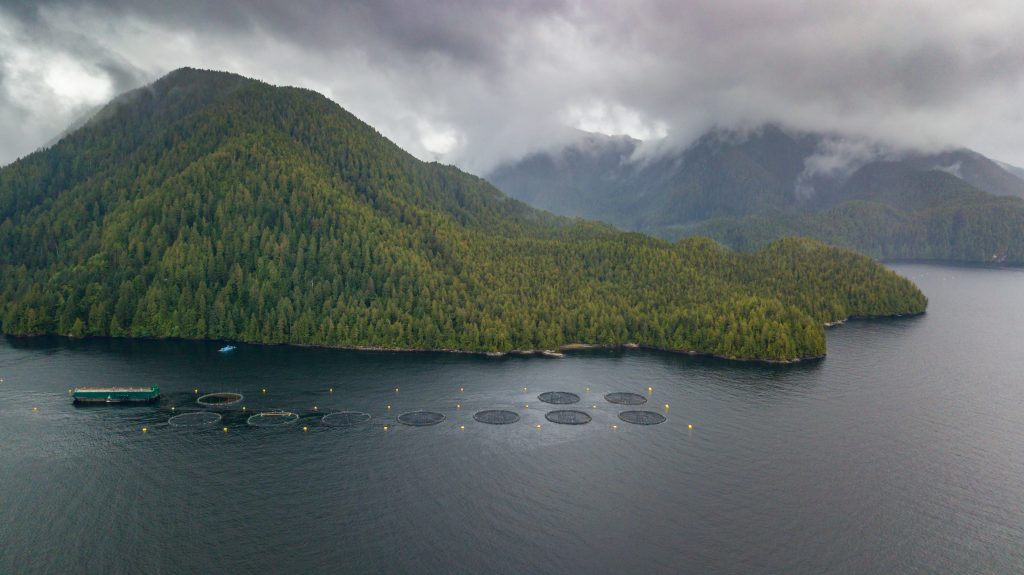
IMAGE ABOVE: A salmon fish farm in the Great Bear Rainforest. In the background, you can see another of these fish farms. | © Niklas Weber
The nets have a diameter of about 30 meters. Nevertheless, the thousands of salmon live in an extremely confined space. This means that diseases and parasites, such as sea lice and the piscine reovirus, spread very quickly. As a result, native wild salmon are infected on their way from the ocean to the rivers, as well as young salmon in spring when they make their great journey from the rivers of their origin to the ocean. Many pesticides and antibiotics are used to counteract this. Yet, we are talking about open nets in an ocean with very strong currents at times. The pesticides and antibiotics do not stay in the nets for long. Instead, they are carried directly into the ocean and greatly attack the ecosystem.
In addition, the fish are overfed in order to be “harvested” as quickly as possible. During this process, the food also ends up in the ocean quickly. This partly occurs because the salmon cannot eat it so rapidly, but also indirectly through their excrement. Either way, it does extreme damage because the nutrients cannot be utilised by the ocean at the same rate.
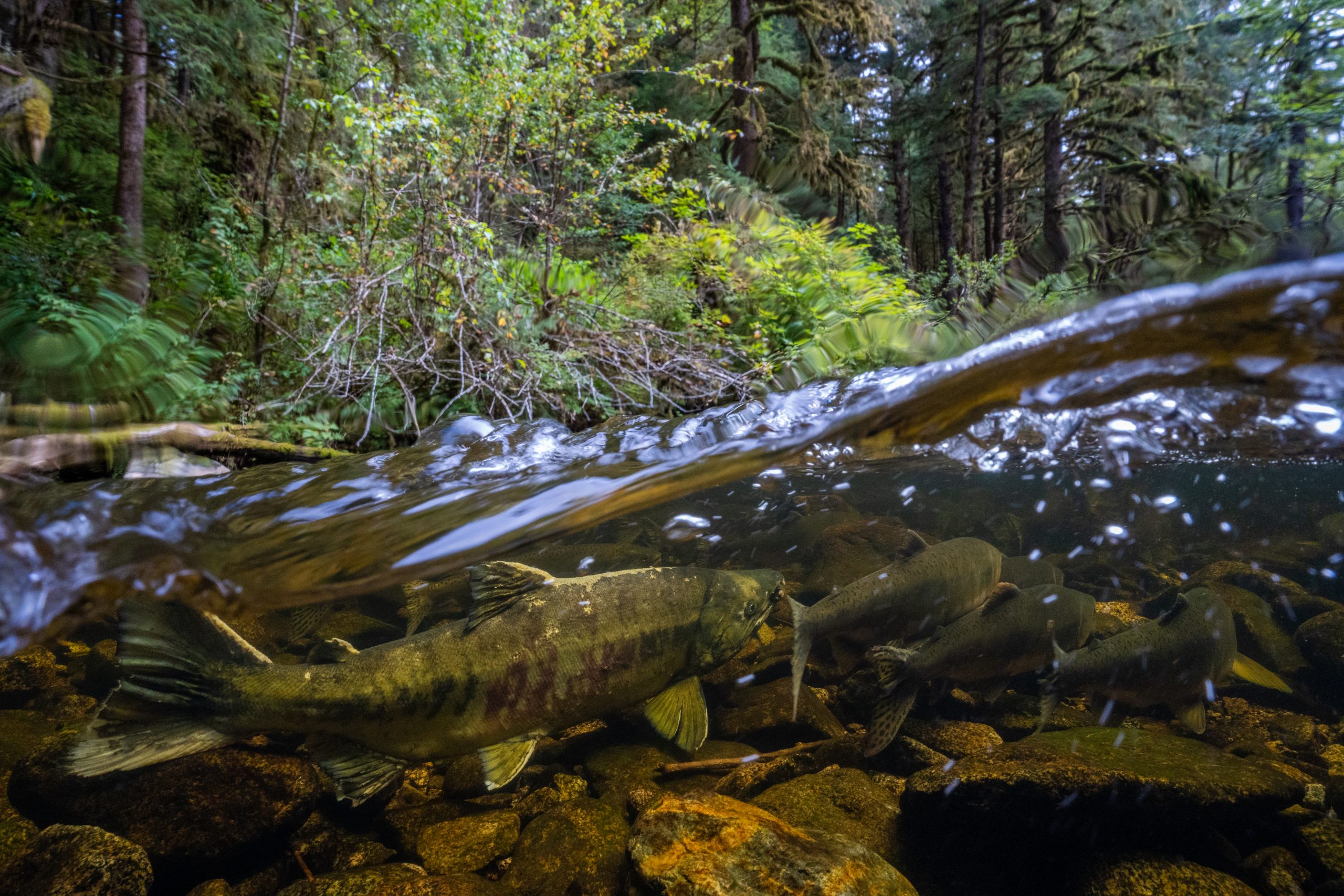

IMAGE LEFT: Chum salmon and pink salmon swim up a river to spawn. | © Niklas Weber
IMAGE RIGHT: Temperate rainforest with a river running through it on a remote island in the middle of the Great Bear Rainforest. | © Niklas Weber
The salmon are fed herring. Herring are small fish that gather on the west coast of Canada in the spring to spawn on the coast. During this spectacle, commercial fishing companies catch thousands of tons of herring to be processed into food for fish farms. In 2019, 20,000 tons of herring were caught. In 2020, the the number came to 9,240 tons (always 20% of the estimated stock). At the same time, the wild salmon have less food available to them, as well as the bears, wolves and birds that feed on the eggs after a hard winter. The outcome: already 4 out of 5 herring populations are ancient history.
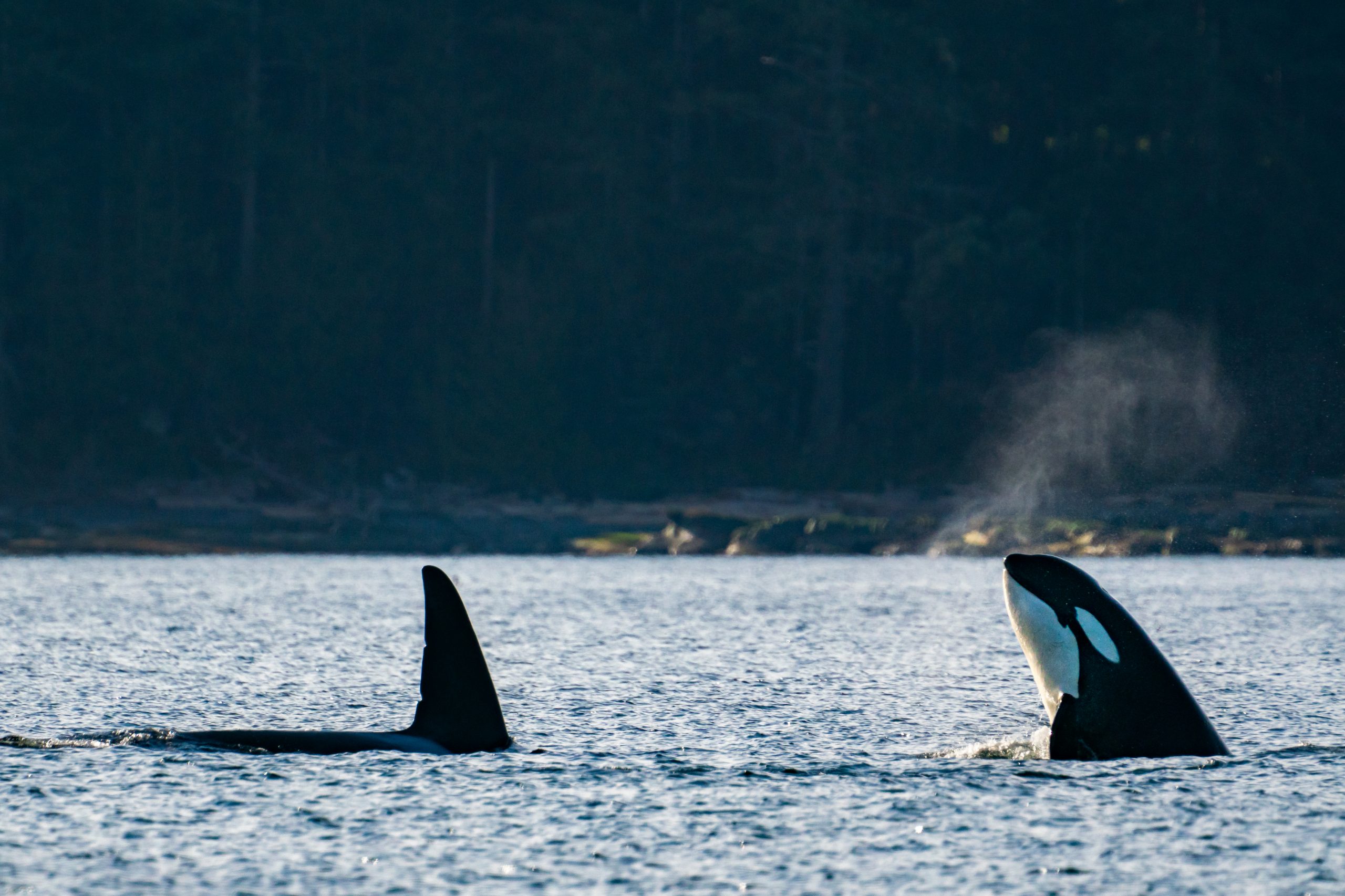
IMAGE ABOVE: A school of transient killer whales chase Steller sea lions near Vancouver Island. | © Niklas Weber
To make matters worse, because Atlantic salmon grow faster, they are farmed in the Pacific Ocean on the west coast of Canada. The mixing of foreign species from a different ocean brings diseases from the Atlantic to the Pacific. Moreover, one must keep in mind that nets are not indestructible.
Seagulls, sea lions and orcas are only some of the species that feed on salmon. Now and then, thousands of salmon escape into the ocean, as happened in August 2017, when 263,000 salmon escaped near San Juan Islands. One cannot even imagine what the consequences would be if these salmon swam up the rivers and spawned there.
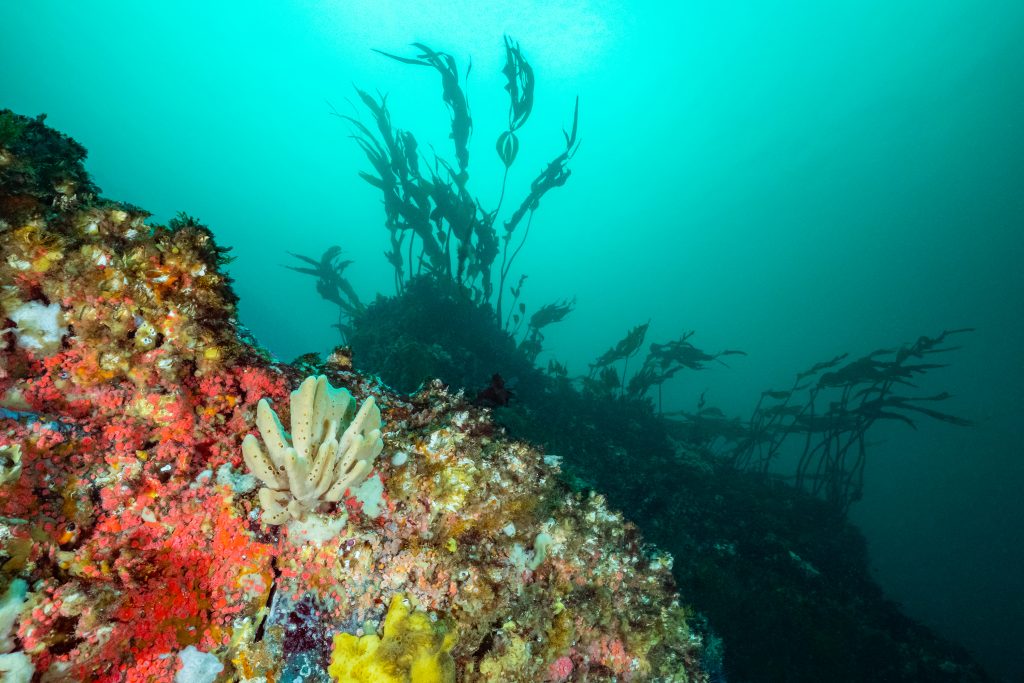
IMAGE ABOVE: Thousands of anemones and sponges cover the rocks underwater. A kelp forest can be seen in the background. | © Niklas Weber
In 2019, I myself unfortunately discovered over 16 rivers with hardly any or no salmon at all. Only in four did I find a healthier population of pink salmon and a few chum salmon. I cannot imagine what it is like for the bears, wolves, bald eagles, gulls, southern resident killer whales, harbour seals, Steller sea lions, and the many other animals. They do not own motorboats and cannot search a multitude of rivers for salmon before the harsh winter arrives. Let alone when they have to feed their young. Even the temperate rainforest depends on the salmon. Among other species, the salmon are eaten by the bears, and their excretions subsequently supply the forest with nutrients.
As you can see, things are not looking good for one of the last truly wild areas on Earth.
But the First Nations and conservationists, such as Ian McAllister, are doing everything they can to protect this area and the animals that live there. Grizzly bears, for example, can no longer be hunted as trophies. Wolves and black bears, however, can. The British Columbian government alone has killed 1,250 wolves in the last 6 years, blaming them for declining mountain caribou populations. Not industrial logging, building pipelines and mines, and destroying their habitat for recreational activities.
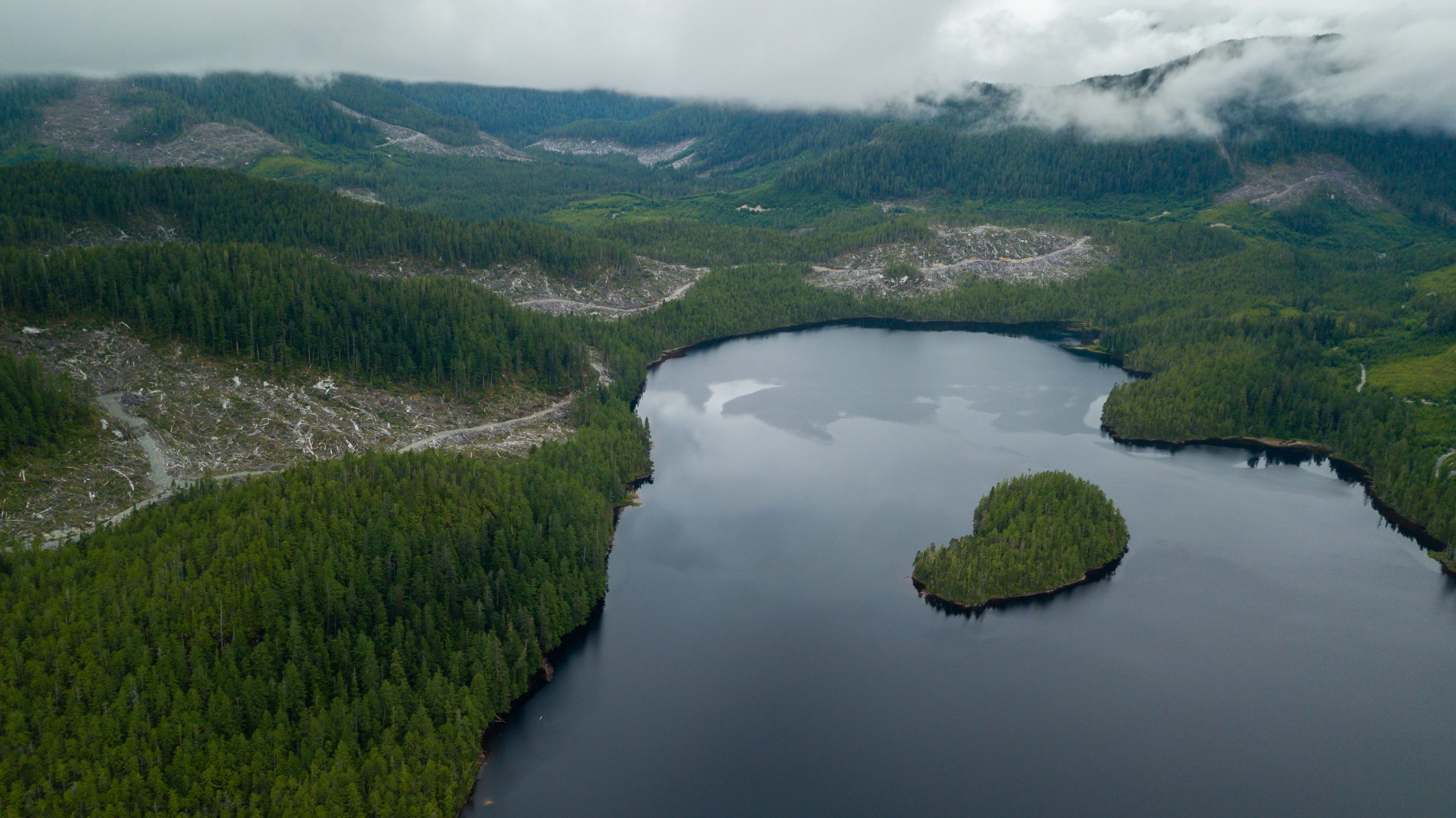
IMAGE ABOVE: Large areas of deforested temperate rainforests. | © Niklas Weber
What do you do when you experience all this destruction and witness it firsthand?
I decided to give up fish in the future, but also all other animal products. Our consumption has an enormous impact on the world we live in. On our doorstep, but also in Canada and countless other areas in the world due to globalisation.
I also try to give wolves a voice. Unfortunately, I cannot save the wolves in Canada. However, I can at least try to bring people closer to the European grey wolves in Germany, through the unique encounters that the animals have given me, in Canada as well as in Germany.
Often times, it is unpleasant to talk about difficult topics. However, that does not mean we should stop talking about them. I am convinced that education is the key to success. It is through the pictures and videos that stories become tangible, for people all over the world. My cameras tell meaningful stories with unique perspectives, in the hope of moving others at first glance.
Only together can we manage to preserve this incredible planet for us, our children and grandchildren.
Follow Niklas Weber on Social Media
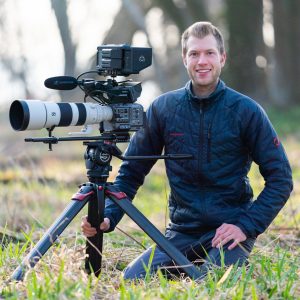
Written by
Niklas Weber
Niklas Weber is an award-winning wildlife cinematographer and nature photographer, storyteller and conservationist. He has worked for NatGeo Wild and Off the Fence Productions, among others. With unique wildlife stories and perspectives, Niklas seeks to strengthen the connection between people and nature.
Based in Germany | www.photoniklas.de
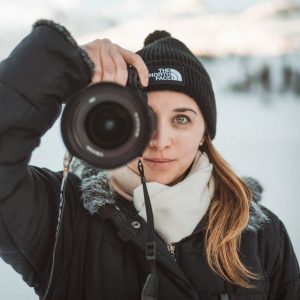
Edited by
Lana Tannir
Lana Tannir is the founder and editor-in-chief of Creatives for Conservation. A professional landscape and wildlife filmmaker and photographer, she specializes in nature conservation and animal welfare projects. Through her stories, she strives to promote global change by raising awareness, advancing education and inspiring people to act.
Based in Germany | www.lana-tannir.com
Join the Journey
Subscribe to receive more stories about nature and wildlife conservation.
Discover Our Stories
Explore more inspiring stories written by our creative conservationists.
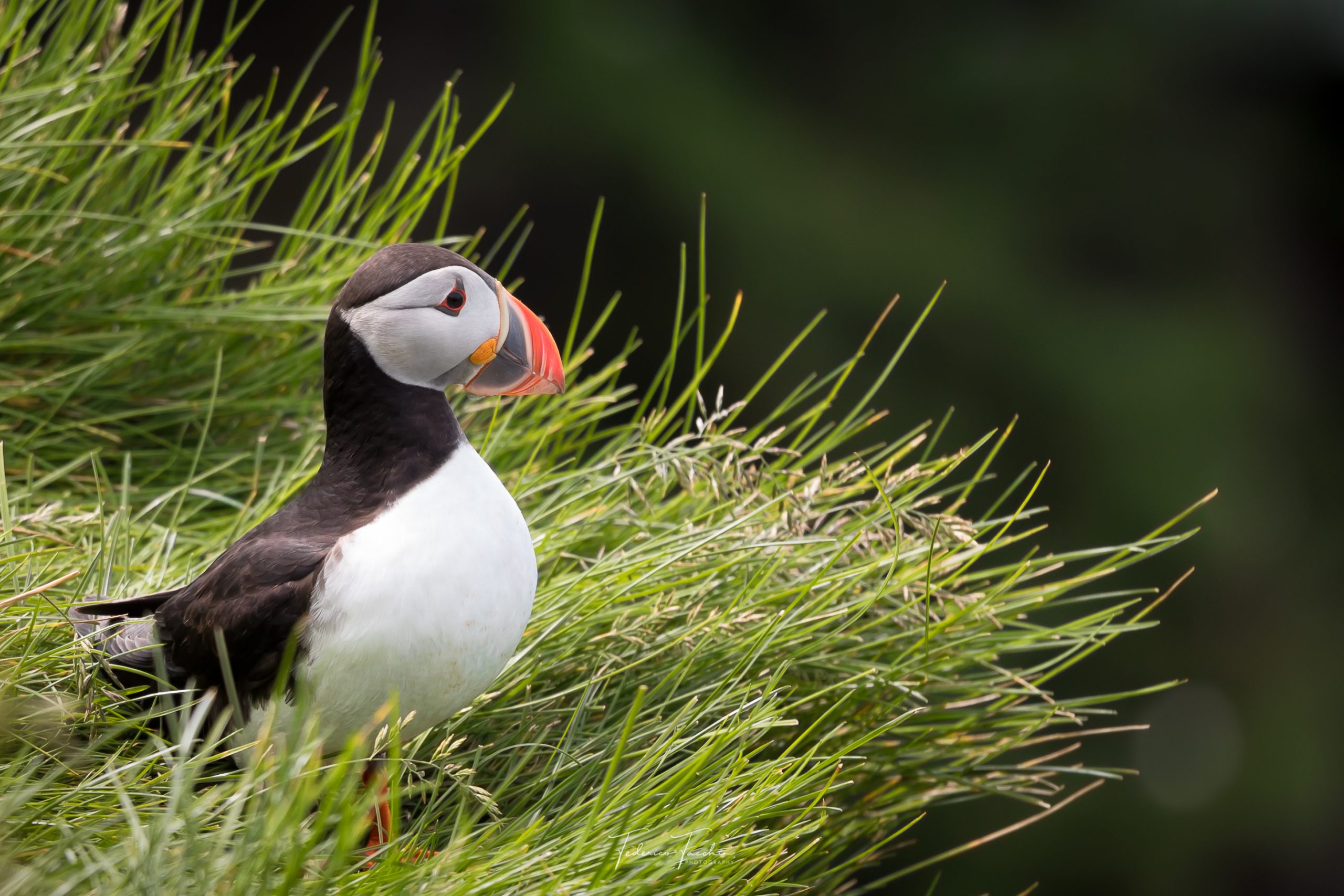
On the Brink: Atlantic Puffins in Iceland
While not considered an endangered species, Atlantic Puffins are nevertheless facing numerous challenges in Iceland. Overfishing, pollution, climate change and even hunting have led to a population decline by 45.6% between 2003 and 2017. Marine biologist, science teacher and photographer Federico Facchin shares his encounters with this species and discusses the need to protect them.
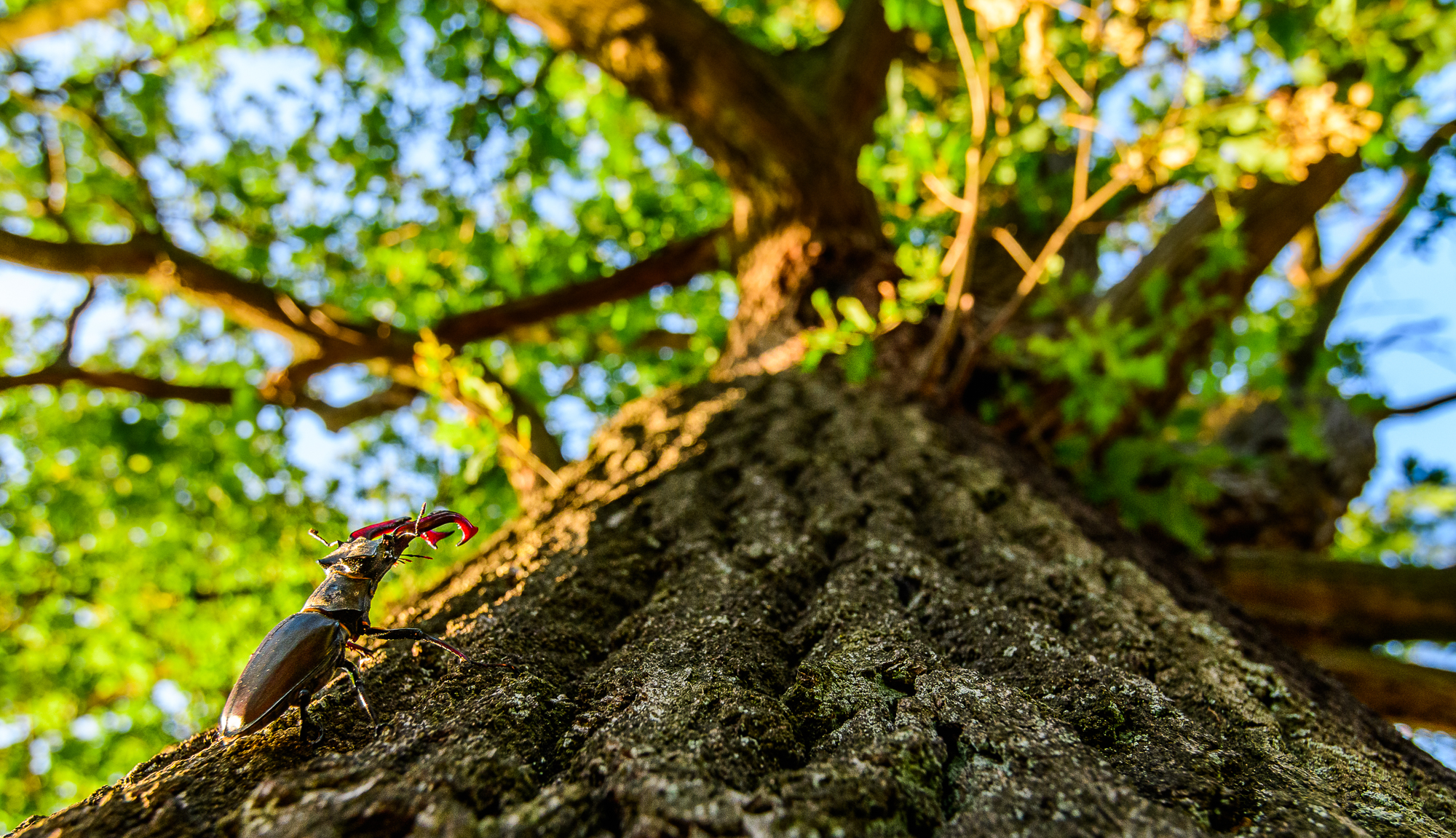
Conservation of European Forests
European forest ecosystems face various threats. Many of them originate from the management and exploitation systems in the past. However, numerous solutions are being applied in the current day to establish a balance between forestry and biodiversity. Ecologist and photographer Jeroen van Wijk reveals the challenges and solutions to conserve these forests.
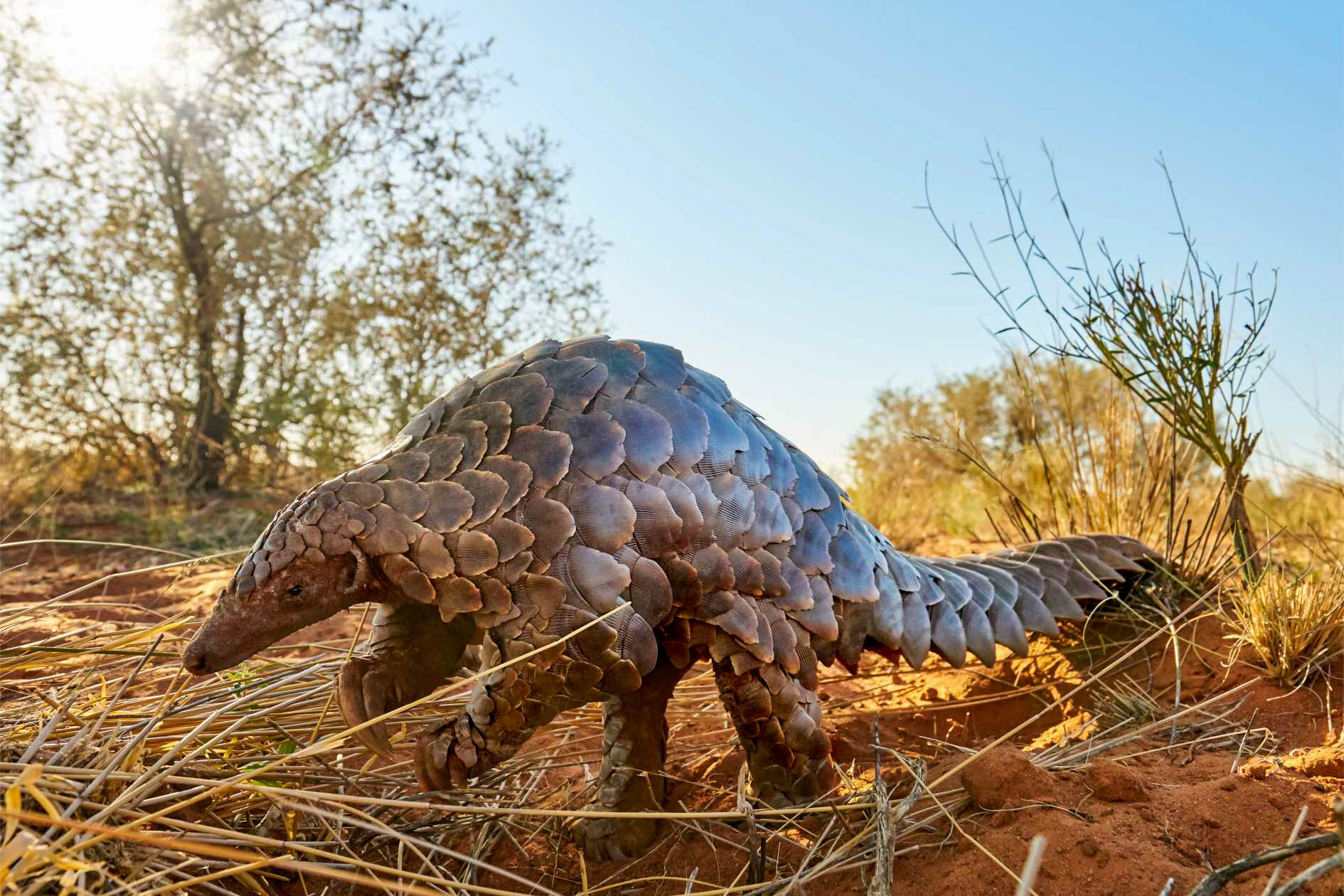
Saving Pangolins with Wild & Free
As the world’s most trafficked animal, the pangolin is a victim of horrendous injustice and cruelty. A pangolin is poached every 5 minutes, while 125,000 pangolins are illegally traded each year. Staggered by this statistic, Geraldine Morelli supports pangolin conservation, rehabilitation and release in Asia and Africa with her UK-based charity Wild & Free.
